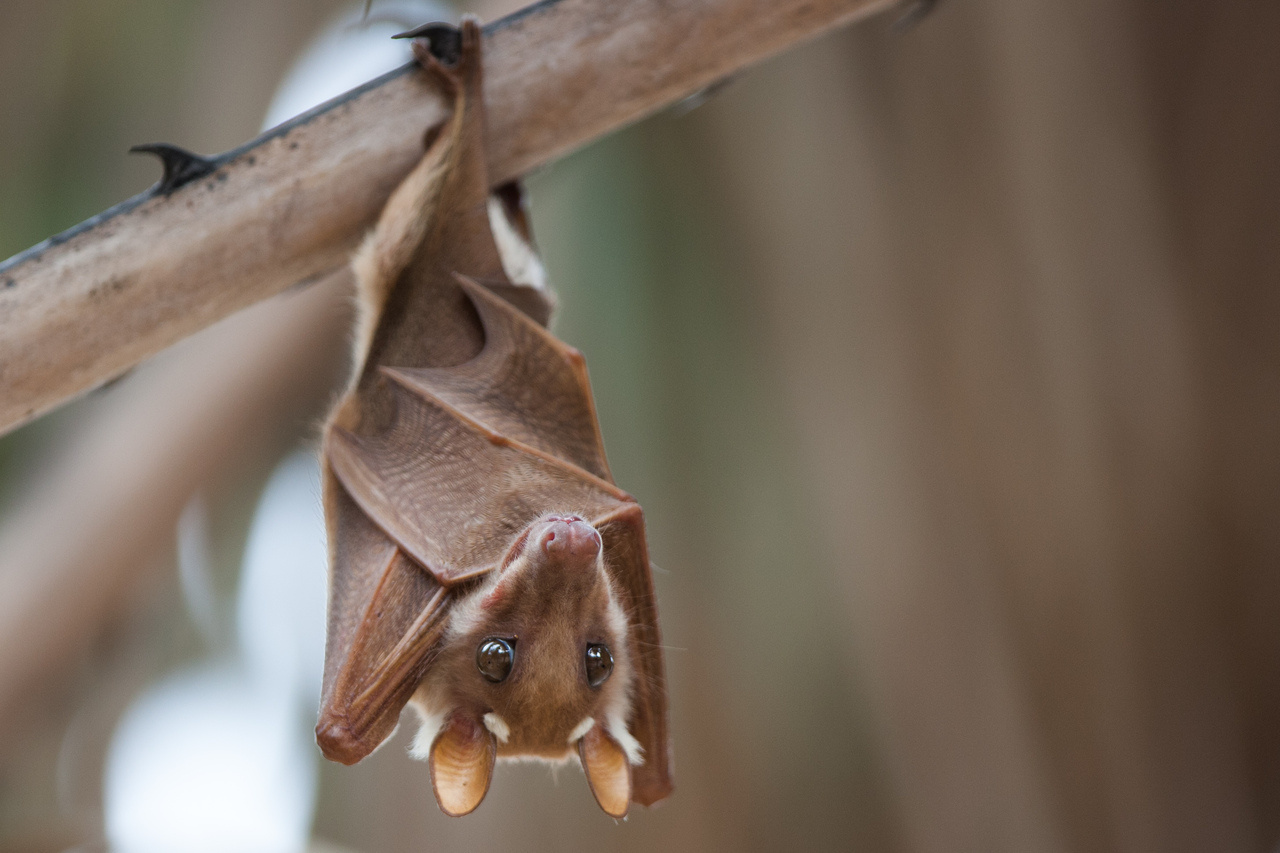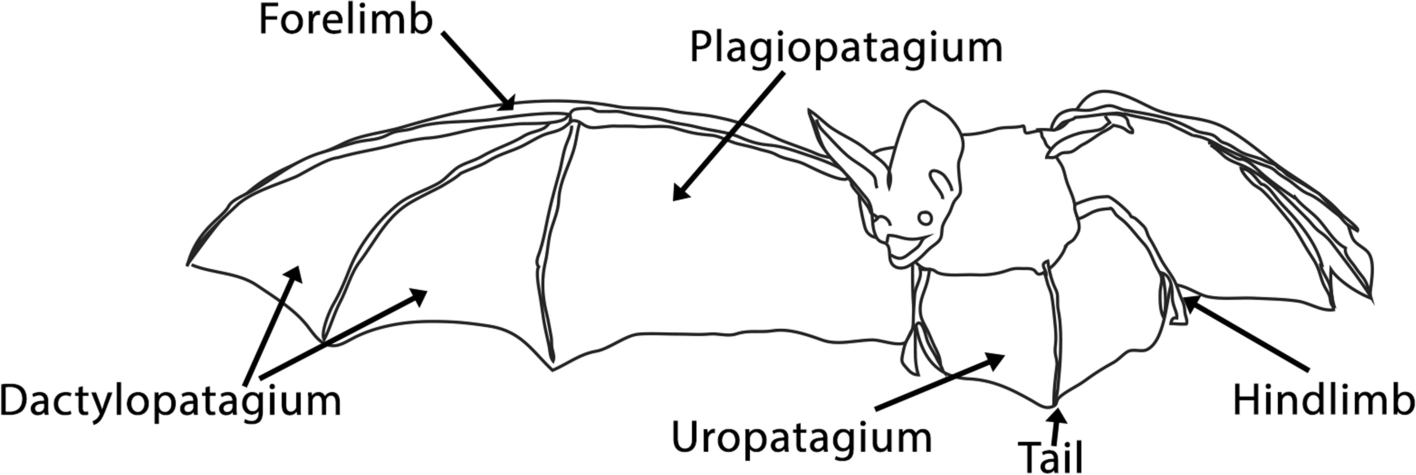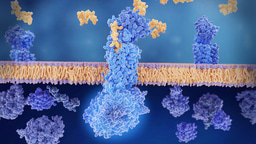🦇 Celebrate Bat Week with BMC Biology 🦇
Published in Ecology & Evolution and Zoology & Veterinary Science


While we may not always see them, bats are hard at work all around the world. Bats play a critical role in maintaining healthy ecosystems and supporting global agriculture:
- Insect pest consumption: Insect-eating bats help protect crops and forests by consuming vast quantities of bugs.
- Pollinators & Seed Spreaders: Many bats feed on nectar, pollen, and fruit, making them vital for plant reproduction and forest regeneration.
Simply put, humans need bats!
Let's review just a few of the many reasons bats are so incredible.
Diverse & Widespread: Bats are the second largest order of mammals (Chiroptera) with more than 1,300+ species and live on six continents. 60-70% of bat species eat insects, others are carnivorous – feeding on rodents, frogs or fish, some eat nectar and fruit and are key pollinators, and a few feed on animal blood (mostly birds).
Speaking of 1300+ species, have you heard of the BAT1K? If not, learn more about it from t his guest post by one of the leaders, Sonja Vernes.
“The BAT1K consortium will contribute to a range of research efforts, from the evolution of traits like flight, immunity and sensory modalities to bat conservation and even human disorder states and novel therapeutics.”
True Flyers: Bats are the only mammals capable of powered flight, thanks to their unique wing membranes (sorry flying squirrels, that’s technically only gliding).

In this study, Anthwal et al. investigated the developmental processes of one of the membranes, the plagiopatagium, which connects the forelimb to the hindlimb and plays a key role in flight maneuverability.
Researchers examined embryos from 37 bat species with varying diets and flight styles. They discovered that the plagiopatagium begins as a lateral outgrowth from the body wall around embryonic stage 15 and merges with the limbs by stage 16. This merging process is highly conserved across species and involves changes in the epidermal epithelium, particularly in the periderm, a temporary outer skin layer.
Using RNA sequencing, the team identified genes like Ripk4 and Klf4, known for their roles in skin development (and linked to human conditions involving webbed limbs), as key players in this process. Interestingly, the shape of the plagiopatagium remains similar across species until after merging, when it begins to diversify in ways that reflect each bat’s ecological niche.
What that means is all 37 bat species in this study started with the same basic wing blueprint, after the membrane is fully formed it will then start to into different wing shapes that best supports those fruit-loving forest dwellers vs insect-chasing aerial acrobats.
Fun fact, bats are not blind. This is a common misconception (who started the phrase blind as a bat anyway?). In fact, bats have eyesight comparable to humans. Although many bats, in addition to their eyesight, use echolocation - a sonar-like ability that allows them to navigate and locate objects by emitting sound waves and interpreting the returning echoes. Echolocation is especially useful in tracking evasive prey.
Fast vocal-motor tracking of escaping prey in echolocating bats
Couldn’t catch that fly or swat that mosquito with all the lights on? What about trying to do that in the dark… while flying 30 miles per hour (~48 kph)? And if you fail, say goodbye to your dinner.
Fortunately, unlike us, bats have echolocation. Despite this superpower, it is still an intense arms race between the bat and its insect prey. Bats only have a few hundred milliseconds between detection and capture, is that even enough time to adjust their vocalizations?
That is the question Foskolos et al. asked in this study of the greater mouse-eared bats (Myotis myotis).
Using high-resolution biologging tags, the researchers recorded over 460 aerial hunting events in the wild and conducted controlled laboratory experiments with trained bats exposed to simulated prey movements of varying difficulty. The study focused on the “buzz” phase of echolocation—rapid sequences of calls emitted just before prey capture.
Findings revealed that bats exhibit flexible vocal behavior, extending the duration of their buzzes and, in some cases, increasing call intervals (CIs) in response to prey movement. Notably, one bat demonstrated a closed-loop vocal-motor feedback response with a latency of approximately 240 milliseconds, indicating the capacity for real-time tracking. This response time, while slower than that of echolocating toothed whales, is comparable to fast sensorimotor reflexes in large terrestrial mammals.
The authors conclude that bats, despite their sub-second time windows between detection and capture, can track escaping prey deliberately using fast vocal-motor adjustments in a closed-loop control of their active sensing. This helps contribute to bats astonishingly high hunting success.
Size Range: From the tiny bumblebee bat, smaller than a thumb, to the majestic flying fox with a wingspan up to 6 feet.
Speaking of size, did you know that like us, most species of bats only have one pup at a time? That’s because those pups can weigh up to 1/3 of the mom’s body weight. And those bat mothers give birth upside down while hanging by their feet. Looks like there can be some camaraderie of the trials and tribulations of pregnancy and birth across the species... And unfortunately, that also includes pregnancy brain.
Pregnancy-related sensory deficits might impair foraging in echolocating bats
We know that pregnancy can slow down animals with increased energy demands, but what about the impact on sensory systems? This study from Taub, Mazar and Yovel, set out to explore how does pregnancy affect a bat’s superpower of echolocation?
To do this, the researchers trained pregnant and post-lactating female bats to locate and land on a small, hard-to-detect foam platform in a dark, echo-proof room. Using a high-tech setup with 20 cameras and 46 ultrasonic microphones, they tracked every wingbeat and chirp.
The results? Pregnant bats emitted echolocation calls less frequently and with longer durations. They also flew slower and lower than their post-lactating counterparts. When the team ran simulations of bat hunting behavior, they found that these sensory slowdowns led to a 15% drop in prey capture success.
This study demonstrates an additional cost of reproduction, sensory deficits related to pregnancy impair foraging in echolocating bats, and highlights that there is likely relevance to other sensory modalities in bats and other organisms.
The dads aren’t too shabby either, male Dyak fruit bats (Dyacopterus spadiceus) are one of the only known natural occurrences of paternal lactation and can feed their young milk from their own mammary glands.
Ancient Survivors: Bats have been around for over 50 million years. But without global conservation efforts, many bat species risk extinction.
Despite their importance, bats face serious threats:
- Habitat destruction
- Climate change
- Invasive species
- Disease
Speaking of disease, while published with us in 2013, there is still, unfortunately, the need to highlight white-nose syndrome as it is currently a major threat to bats across North America.
White-nose syndrome in bats: illuminating the darkness
White-nose syndrome (WNS), caused by the fungus Geomyces destructans, has devastated hibernating bat populations across eastern North America since its emergence in 2006. This fungal disease disrupts hibernation by causing frequent arousals, leading to premature fat depletion and death. While the fungus is also present in Europe, it does not cause mass mortality there, suggesting that North American bats are more susceptible, possibly due to differences in host physiology or environmental conditions.
Experimental infections confirmed the fungus as the causative agent, and studies have shown that infected bats experience severe wing damage and physiological stress. New evidence supports the hypothesis that dehydration and electrolyte imbalance may contribute to increased arousals and mortality. Environmental factors, such as humidity and temperature in hibernation sites, also influence disease severity.
Encouragingly, some bats have demonstrated the ability to recover from WNS, though recovery is energetically demanding and may be complicated by immune responses post-hibernation. Continued research is essential to fully understand the disease’s pathogenesis and to inform conservation strategies.
Furthermore, while considering conservation efforts it is important to consider scale.
This study analyzes large-scale movements of three Australian flying-fox species—Pteropus alecto, P. poliocephalus, and P. scapulatus—using satellite tracking of 201 individuals over five years. Flying-foxes, the world’s largest bats, are highly mobile and play critical ecological roles as pollinators and seed dispersers. However, their mobility also complicates conservation efforts and contributes to zoonotic disease transmission and human-wildlife conflict.
The research revealed that individuals of all three species exhibit extreme inter-roost mobility, traveling thousands of kilometers annually across a network of 755 roost sites, many of which were previously undocumented. Daily roost turnover rates were high—up to 36% for P. scapulatus—indicating that colonies are dynamic assemblages rather than stable, resident populations. This challenges traditional conservation models that assume local population stability.
The findings have significant implications. Ecologically, flying-foxes provide vital connectivity across fragmented landscapes, supporting forest regeneration and biodiversity. From a public health perspective, their mobility influences the transmission dynamics of zoonotic diseases like Hendra virus, particularly as P. alecto, a known reservoir, increasingly overlaps with other species.
In terms of management, the study underscores the limitations of local-scale interventions such as roost dispersals, which often fail due to high individual turnover and the bats’ reluctance to relocate far during daylight. The authors advocate for nationally coordinated, evidence-based conservation and management strategies that account for the species’ nomadic behavior and transboundary movements.
Tl;dr Some bats have much larger localities than we do and conservation efforts must reflect that!
🔗 Want to Learn More & Get Involved🔗
Bat Week Official Site: https://batweek.org/
Bat Conservation International: https://batcon.org
Bat1K Consortium: https://bat1k.com/
Follow the Topic
-
BMC Biology

This is an open access journal publishing outstanding research in all areas of biology, with a publication policy that combines selection for broad interest and importance with a commitment to serving authors well.
Related Collections
With Collections, you can get published faster and increase your visibility.
Aging microenvironment and disease
BMC Biology is calling for submissions to our Collection on Aging microenvironment and disease. This Collection aims to help our understanding about the molecular mechanisms and cellular processes that affect the tissue microenvironment during aging and aging-related diseases, as well as the implications in the development of novel therapeutic interventions to restore the aging microenvironment.
We welcome studies using spatiotemporal multi-omics and advanced imaging approaches to explore the aging microenvironment, using animal models, human tissue, or organoids. We especially highlight submissions focused on the contribution of aging-related changes to diseases, including cancer, chronic inflammation, lung, hepatic and cardiac fibrosis, vascular disease, neurodegenerative disorders, and chronic kidney disease.
Potential topics for submission may include, but are not limited to:
Genome instability, epigenetic alterations, telomere attrition, disabled autophagy and loss of proteostasis, mitochondrial dysfunction in the aging microenvironment.
Cellular senescence and associated secretory phenotype, stem cell exhaustion, and changes in the stem cell niche, such as alterations in the extracellular matrix, chronic inflammation, fibrosis, vascular niche reprogramming and remodeling.
Intercellular communications and inter-organ cross-talk.
Metabolic alterations in different cell types and their influence on the aging microenvironment and age-related diseases.
Potential therapeutic targets of the aging microenvironment.
This Collection supports and amplifies research related to SDG 3: Good Health and Well-Being.
All manuscripts submitted to this journal, including those submitted to collections and special issues, are assessed in line with our editorial policies and the journal’s peer review process. Reviewers and editors are required to declare competing interests and can be excluded from the peer review process if a competing interest exists.
Publishing Model: Open Access
Deadline: Jan 18, 2026
Human microbiome in health and disease
BMC Biology is calling for submissions on our Collection on Human microbiome in health and disease. The human microbiome plays a crucial role in maintaining health. Comprising trillions of microorganisms, including bacteria, viruses, fungi, and archaea, the microbiome influences various physiological processes, such as metabolism, immune function, and even mental health through pathways like the gut-brain axis. Recent advances in sequencing technologies and bioinformatics have enabled researchers to explore the intricate relationships between the microbiome and human health, revealing its potential as a target for therapeutic interventions.
Continuing to advance our understanding of the human microbiome is essential for developing novel strategies to prevent and treat diseases. Significant progress has been made in identifying specific microbial signatures associated with conditions such as obesity, diabetes, and cancer, as well as understanding the impact of antibiotics on microbial diversity. These insights have opened new avenues for personalized medicine, where microbiome profiling could guide treatment decisions and improve patient outcomes.
As research in this field progresses, we can anticipate exciting developments, including the potential for microbiome-based therapies, such as probiotics and fecal microbiota transplantation, to become mainstream treatments. Furthermore, ongoing studies may uncover the role of the microbiome in modulating responses to immunotherapy in cancer patients, leading to more effective and tailored treatment approaches.
Potential topics for submission include, but are not limited to:
The role of the gut, oral, skin, and vaginal microbiome in health and disease
Microbial ecosystems and their impact on the immune system
The gut-brain axis: implications for mental health
The connection between the microbiome and neurodegenerative diseases
Evolution of the human microbiome across different populations
Effects of antibiotics on microbiome diversity
This Collection supports and amplifies research related to SDG 3: Good Health and Well-Being.
All manuscripts submitted to this journal, including those submitted to collections and special issues, are assessed in line with our editorial policies and the journal’s peer review process. Reviewers and editors are required to declare competing interests and can be excluded from the peer review process if a competing interest exists.
Publishing Model: Open Access
Deadline: Jan 31, 2026




Please sign in or register for FREE
If you are a registered user on Research Communities by Springer Nature, please sign in